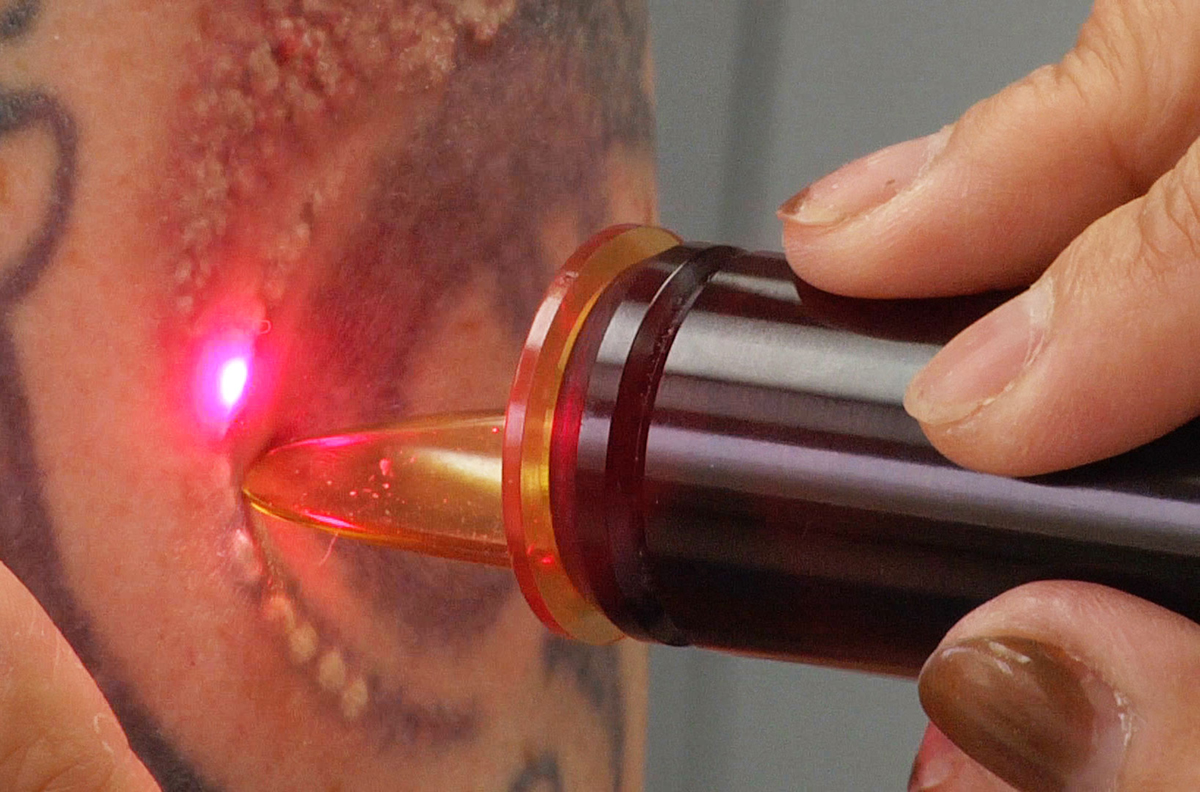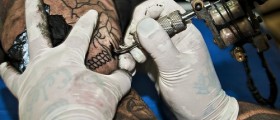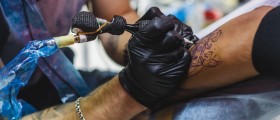
Tattoo removal
Laser treatment
Highly concentrated colored light rays are directed towards the ink to break up ink particles into small remains that may later be cleared up by the body’s scavenging cells. This method involves a couple of sessions, contingent upon the depth of the ink level. Lasers precisely target the colored ink leaving the rest of the skin undamaged. The procedure is bloodless but the heat may provoke pain and blisters, especially when done in deeper layers of the skin, or if the session needs to be repeated a couple of times. Multiple treatments may also increase the risk of scarring.
Patients may often be suggested to take Tylenol a few hours before procedure to help relieve the pain. Local anesthetic ointment may also be used as a covering on the tattoo, or injected a few hours before the removal begins.
The treatment itself lasts just a couple of minutes but it involves multiple sessions that are being split over 4 to 8 week periods.
Removal success rate
The majority of tattoos can be totally removed. However, some of them can’t be removed completely, especially if they’re made during the last decade and using recent advanced ink and tattoo technology. A number of methods may lead to permanent scars.
The best candidates for removal are persons with pale skin and shallowly placed tattoos on the arms, chest, buttocks or legs. Persons of dark skin, or those with tattoos on ankles, fingers or areas with less body fat, should not expect perfect results. It is important to consult with a tattoo removal specialist before the procedure and get informed about the real possible success rate.
Disadvantages
This method has a few possible side effects that include hyperpigmentation (excessive color), or hypopigmentation (excessive fading) of the skin; infection or permanent scaring. Treated areas may look sunburned for a few of months, but this is just a temporary.
It is considered to be a cosmetic procedure and thus isn’t usually covered by medical insurance. However, it is very expensive. It may range from several hundred dollars to thousands of dollars, and it all depends upon the size, type and the location of the tattoo.
Complex tattoos need around eight weeks or six to 10 treatments to be cleared entirely and yet the success of the method cannot be guaranteed.

















Your thoughts on this
Loading...